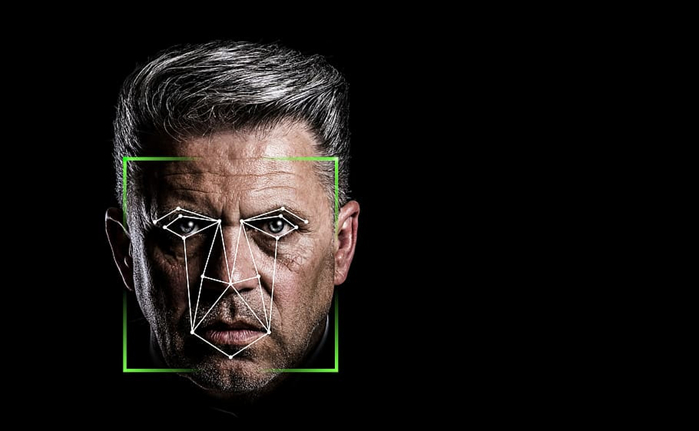Deepfake technology fraud is a growing cybersecurity threat. Cybercriminals mimic reality using AI and machine learning. They trick unsuspecting victims into assuming they are seeing or hearing something real, but not. It is how deepfake fraud happens.
deepfakes happen when attackers use video footage deception or voice cloning to produce fake material. It aims to make it appear the deepfake is the original person talking and moving on the video or audio content.
Here’s a deepfake video of Mark Zuckerberg, Facebook’s CEO, “talking” about how Facebook owns users and their sensitive information.
If an unsuspecting user watches the fake video, it would be upsetting to hear those claims from Facebook’s founder. But it is not Zuckerberg, and those statements are not factual either. But it can cause trouble so that deepfake technology fraud can be very malicious.
For instance, a top executive at an unnamed energy company paid £200,000 to deepfake scammers that mimicked his employer’s voice. He answered a telephone call he thought was from his German parent company and transferred the funds.
The executive transferred funds to his “parent company,” or so he thought. The funds, of course, went to the cybercriminals’ account. It was the first reported deepfake fraud in the UK.
Since deepfakes can look very realistic and sound authentic, consumers nowadays must be more cautious. With deepfakes, to see is should not always be to believe.
How Deepfakes Work
Deepfake is a shortened form of the terms “deep learning” and “fake.” It is a type of artificial media using a machine learning method called GAN or Generative Adversarial Network.
Ian Goodfellow created GAN in 2014 to make fake photos, audio, and video from existing data.
It has gained worldwide attention for malicious uses such as pornographic content, false news, identification, and financial theft.
Because it can mimic the human voice, it was used to target call centers or conduct email scams. Deepfake may defeat face recognition devices in the future, including advanced liveliness tests. That is why governments and industries need to strengthen biometric authentication. It helps prevent unauthorized access and deepfake fraud.
5 Steps to Prevent Deepfake Technology Fraud
Always verify if the content seems doubtful.
Even if it may be cumbersome, you need to check and verify content. This is true, especially when you are in doubt or an important transaction. It is better to be careful than sorry. Employ measures to verify the humanity of customers.
If it is a significant transaction, you can ask for proof of identity. It can be a picture of the person holding a government ID, common among financial apps.
New techniques are now being developed to identify manipulated audio and video.
Better detection technology is needed to avoid deepfake technology attacks.
Companies can defend themselves from deepfake cyber attacks to find a robust way to detect them, ideally using automated technologies.
It can be possible through Artificial Intelligence or AI-powered detection software. Training deep learning algorithms is possible to detect deepfake signs in images and videos.
The image below by Neuroscience News shows the forensic analysis used to determine validity from deepfake material.

Tech-based strategies can also be used, like watermarking content, so any form of manipulation or tampering can be detected. A cryptographic tool called Amber Authenticate generates hashes at preset intervals in a video.
When a video goes through alteration, the hashes will be different, warning the user that the video content is tampered with.
Increase creative strategies to defend against deepfake technology fraud.
For social engineering and deepfake scams, people are the primary target. Educating your employees about trends and threats to cybersecurity is essential to ensure your employees will not fall victim to fraud.
Get creative in engaging employees to establish a culture of safety in the team. The aim is to train employees to be proactive regarding security to be a protocol for them to verify.
Make training engaging. You can include drills as well. Do not just do training once or twice. Find ways to make it a team culture so that best cybersecurity practices come naturally for everyone in the team.
Set safety procedures for preventive security measures.
Another solution to deepfakes is by implementing new network security measures in the company. The possibility of a deepfake fooling a person is relatively high. However, if you involve more people, the attacker’s ability to convince someone will sharply drop.
By adding multiple checks to possible deepfakes cases, a company can better detect a deepfake attack before it happens.
Employee education leads to awareness.
One of the reasons why deepfakes are so dangerous is the uniqueness of the threat.
Many companies still do not know what the deepfakes are and what harm they can do. By teaching staff, managers, and owners about the threat’s nature, businesses may reduce the risk of succumbing to a deepfake attack.
Again, to develop a security-minded company culture, you need a systematic approach. You can do employee training about security risks and prevention to develop skills among staff.
Conclusion: Heighten Deepfake Technology Defence
Deepfake technology is evolving. It was effortless in the past to identify deepfake videos. The quality of deepfake videos was low, and the movement of the deepfake’s face was obviously not real.
But that is not the case today. The deepfake videos now are so realistic.
It is also easier to make deepfake videos. You can download applications to do deepfake videos for fun. Sadly, attackers are exploiting the evolution of this technology.
Ransomware’s rise led to better anti-malware software and better detection of malicious software. Now, people are more cautious about their privacy and malware protection. Servers are now a standard protocol for businesses to better guard their data and do frequent backups.
Microsoft Servers, for instance, are in-demand because of their robust and highly efficient server systems. Businesses particularly go for their business products, like Microsoft Windows Server Enterprise, perfect for large-scale operations.
You can also boost your business with Microsoft Windows 10 and Server Data Center because Windows still dominate iOS, Linux as an operating system.
In the same way, worsening deepfake cyber threats are amplifying efforts to detect deepfake. Technology developments are constantly improving to detect deepfake phishing and fraud at a more efficient and faster rate.
Companies need to be updated about these developments. The last thing companies want for attackers to gain access to their system and cause damage to both systems and reputation.





Pingback: 4 Reasons Why Small Businesses Need Big Data | Business Tips | Softvire